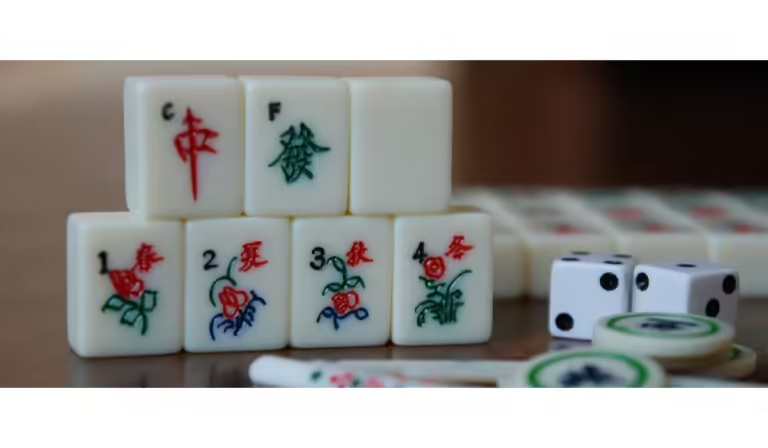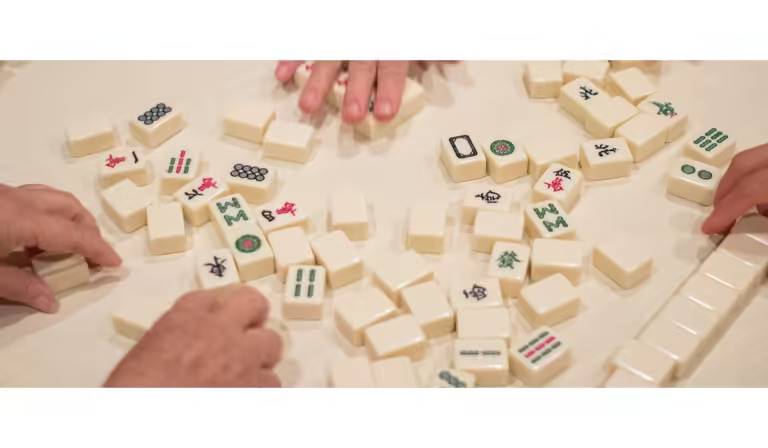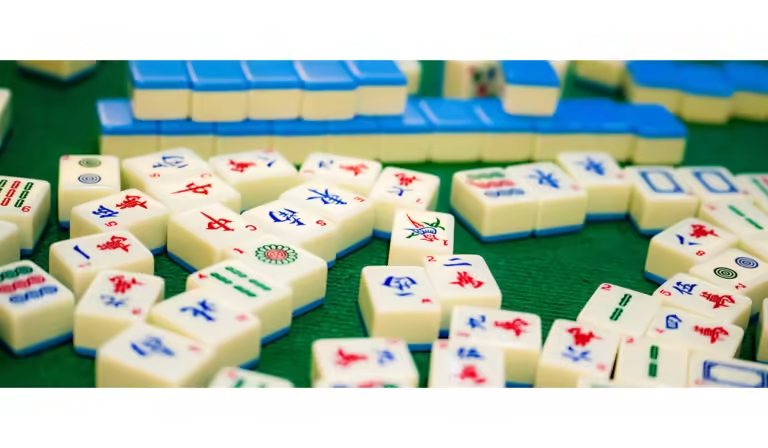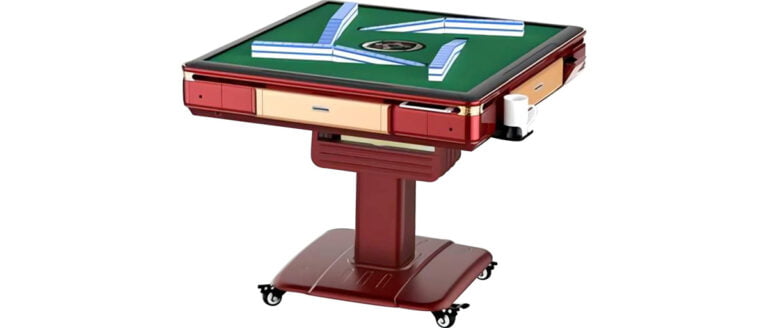Mahjong, a tile-based game originating from China, has gained immense popularity worldwide. To ensure an enjoyable gaming experience, Mahjong tiles must possess both visual appeal and durability. In this article, we will dive deep into the world of Mahjong tiles, exploring their intricate manufacturing process and the materials used to create these fascinating game pieces.
Table of Contents
The History of Mahjong Tiles
Before delving into the details of how Mahjong tiles are made, it is important to understand the history of this ancient game. Mahjong is believed to have been invented during the Qing Dynasty in China, dating back to the mid-1800s. This captivating game rapidly gained popularity and soon spread to other parts of Asia and eventually to the Western world.
Understanding Mahjong Tile Materials
Mahjong tiles are crafted from a variety of materials, each possessing unique characteristics. Let’s explore some of the most commonly used materials in the production of Mahjong tiles:
- Bamboo: Traditionally, Mahjong tiles were crafted from bamboo. Bamboo tiles are not only lightweight but also have a natural texture that provides players with a comfortable grip. The use of bamboo not only gives the tiles an elegant look but also ensures their durability. Bamboo is known for its strength and resilience, making it an excellent choice for Mahjong tiles.
- Bone: Another traditional material used in Mahjong tile production is bone. Cow bone, due to its availability and ease of crafting, is commonly used. Bone tiles are smooth, glossy, and provide players with a distinct tactile experience. The use of bone in Mahjong tiles adds a touch of sophistication and elegance to the game.
- Ivory: In the past, precious ivory from elephant tusks was also used to create Mahjong tiles. However, with the global ban on ivory trade to protect endangered species, ivory tiles are no longer produced. It is essential to note that the use of ivory in Mahjong tiles is illegal and unethical. The ban on ivory trade reflects the commitment to conservation and the preservation of wildlife.
- Plastic: With advancements in technology, plastic has become the most common material used in modern Mahjong tile production. Plastic tiles are affordable, lightweight, and come in a wide range of designs. They are highly durable, making them a popular choice for both casual players and professional tournaments. The versatility of plastic allows for intricate designs and vibrant colors, enhancing the overall visual appeal of the game.
The Manufacturing Process
Creating Mahjong tiles is a meticulous process that involves several steps. Let’s take a closer look at how these beautiful game pieces are made:
- Designing: The first step in manufacturing Mahjong tiles is designing. Skilled artisans or designers create intricate patterns and characters that will be engraved or painted on the tiles. These designs are crucial as they give each set its unique appearance. Attention to detail is essential in capturing the essence of the game and its cultural significance.
- Molding: Once the designs are finalized, the manufacturing process begins with molding. The chosen material, such as bamboo, bone, or plastic, is poured into a mold. The mold determines the shape and size of the tiles. Careful consideration is given to the weight and thickness of the tiles to ensure optimal gameplay. The molds are then heated or cooled to solidify the material, resulting in durable and consistent tiles.
- Engraving or Painting: After the tiles have been molded, they are ready for the next phase – engraving or painting. Bamboo and bone tiles are often engraved by hand, while plastic tiles are usually painted using automated techniques. Skilled craftsmen meticulously add the designs and characters to the tiles, enhancing their visual appeal. The intricate engravings or painted details contribute to the overall beauty and uniqueness of each tile.
- Finishing and Polishing: This step involves sanding and polishing the tiles to give them a smooth and shiny finish. The tiles are carefully inspected for any imperfections, ensuring that each tile meets the highest quality standards. The finishing touches not only enhance the appearance of the tiles but also contribute to the tactile experience of players. A flawlessly finished tile adds to the overall enjoyment of the game.
Maintaining Mahjong Tiles
To ensure the longevity of Mahjong tiles, proper care and maintenance are essential. Here are some tips to keep your tiles in excellent condition:
- Storage: Store your tiles in a clean and dry place to prevent moisture damage. Consider using a dedicated Mahjong tile box or bag to keep them safe from dust and scratches. Proper storage not only protects the tiles but also helps maintain their appearance over time.
- Cleaning: Regularly clean your Mahjong tiles with a soft cloth or a slightly damp cloth to remove any dirt or residue. Avoid using harsh chemicals or abrasive materials that could damage the surface of the tiles. Gentle cleaning ensures that the tiles remain in pristine condition, allowing for a delightful gaming experience.
- Handling: Handle the tiles with clean hands and avoid applying excessive force or dropping them, as this can cause chips or cracks. Treating the tiles with care ensures their longevity and preserves their aesthetic appeal. Gentle handling prolongs the lifespan of the tiles, allowing for countless hours of enjoyable gameplay.
Conclusion
The fascinating world of Mahjong tiles involves intricate craftsmanship, attention to detail, and the use of quality materials. Whether made from bamboo, bone, or plastic, Mahjong tiles are designed to provide a visually pleasing and enjoyable gaming experience. By understanding the materials used and following proper maintenance practices, you can ensure the longevity and beauty of your Mahjong tiles for years to come. Embrace the rich history and artistry behind Mahjong tiles as you embark on countless hours of captivating gameplay.
FAQ
Q: What are Mahjong tiles made of?
A: The most commonly used materials in the production of Mahjong tiles are bamboo, bone, ivory (although it is now illegal and unethical), and plastic.
Q: What are the advantages of using bamboo for Mahjong tiles?
A: Bamboo tiles are lightweight, have a natural texture for a comfortable grip, and are known for their strength and durability.
Q: What is the manufacturing process of Mahjong tiles?
A: The manufacturing process of Mahjong tiles involves designing, molding, engraving or painting, and finishing and polishing.
Q: How should Mahjong tiles be maintained?
A: Mahjong tiles should be stored in a clean and dry place, regularly cleaned with a soft cloth, and handled with care to prevent chips or cracks.
Affiliate Disclosure
Some of the links on MahjongGames.net are affiliate links. This means that we may earn a small commission if you click through and make a purchase, at no additional cost to you. Please note that our product reviews and roundups are independent, and the affiliate relationships do not influence our content in any way.
MahjongGames.net is a participant in the Amazon Services LLC Associates Program, an affiliate advertising program designed to provide a means for sites to earn advertising fees by advertising and linking to Amazon.com.
Amazon and the Amazon logo are trademarks of Amazon.com, Inc. or its affiliates.
Our passion for games extends far beyond the mah jong table. We’ll be your trusted companion, on a journey through the enchanting realms of not only mahjong but also backgammon, dominoes, chess, checkers, and a diverse array of other captivating board games.
Whether you’re in search of the ideal chess set, a luxury backgammon set, a chinese checkers set, a checkers set, or if you’re seeking the excitement of a thrilling game of mahjong solitaire, we’ll guide you along the way. In partnership with our affiliates, we bring you an extensive selection of board games and past times to explore and enjoy.
Dive into our extensive collection of guides and reviews, and unlock the joy and exhilaration that board games offer. From exquisitely crafted game pieces to the essential accessories that elevate your gaming experience, we’re here to guide you through it all with ease and delight.
Join us in celebrating the timeless allure and camaraderie that these games nurture, one post at a time!





